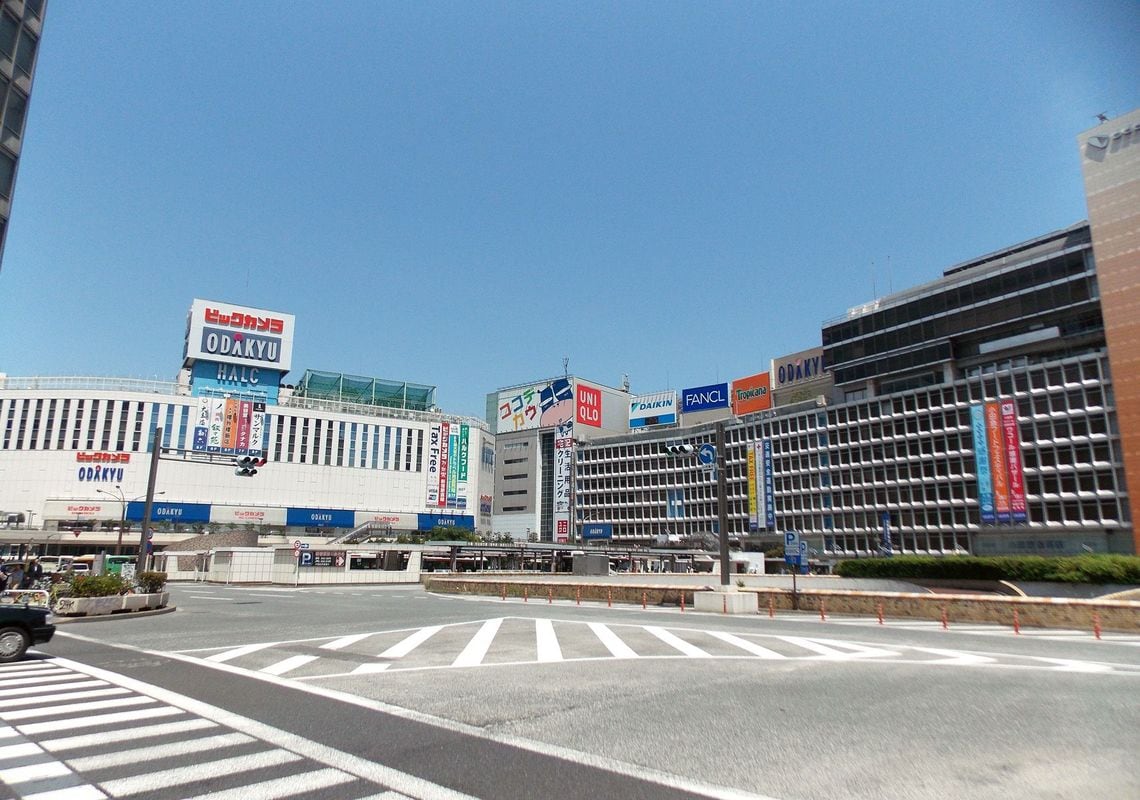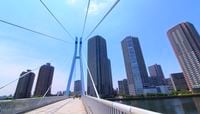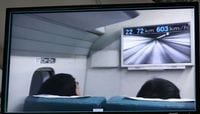
Shinjuku Station, boasting the world's top average number of passengers per day, at approximately 3.26 million as of 2011, shows absolutely no signs of slowing down.
At Shinjuku's South Exit, JR East is currently constructing a 33-story office building, and the Ministry of Land, Infrastructure, and Transport is also building a transport hub featuring bus terminals and taxi ranks. These construction projects are scheduled for completion in spring 2016.
Odakyu in action
In addition, there seems to be some progress toward the redevelopment of Shinjuku's West Exit. Odakyu Electric Railway is leading the project.
Running alongside the station from Shinjuku's West Exit is a range of stores, including the Odakyu Department Store, a commercial establishment managed by Odakyu, and the Keio Department Store.
The front of the station features a three-level construction with bus stops on the ground level. The underground plaza is connected to department stores, the buildings at the front of the station, and the railway stations, acting as a gateway to the city's skyscrapers and leading into the Tokyo Metropolitan Government Building. Underneath the rotary in the basement there is a parking lot that can accommodate 380 vehicles.
Enclosing the plaza are some buildings standing close together, including the Shinjuku West Exit Hall and Shinjuku L Tower. Although the headquarters of Fuji Heavy Industries had previously been based in the Subaru Building, this structure was acquired by Odakyu in 2011 for 34 billion yen. Although the reason stated for the purchase was the expansion of their leasing business, the real objective was future redevelopment.
Odakyu is the largest landowner of the West Exit, owning four buildings that almost surround the whole of the West Exit plaza, namely the Odakyu Department Store and the Subaru Building. Moreover, the company has also invested in substantial developments underground with its Odakyu Ace Shopping Mall, and the management of the West Exit Parking Lot, which was entrusted to them by the Tokyo Metropolitan Government.
The Shinjuku area, alongside Shinagawa and Shibuya, was designated in 2012 as an area requiring urgent redevelopment and maintenance. As the restrictions on floor-space ratio and height have been relaxed within this section, architects can exercise a high level of freedom in their construction plans. JR East's South Exit redevelopment project is one of them.
Although the redevelopment of Shinjuku's West Exit is not part of this remit, there have been recent rumors of potential redevelopment work in line with Odakyu's acquisition of the Subaru Building. In 2011, Odakyu's yearly reported management figures showed intention to expand their leasing business through the purchase of the Subaru Building, but in 2012 it became apparent that this had been done in preparation for future large scale investments, including the redevelopment of Shinjuku's West Exit, among others.
On April 30, Odakyu finally started getting the ball rolling. In line with the announcement of their fiscal 2015 results, their three-year medium-term management plan was shown to include an investigation into a redevelopment project of Shinjuku's West Exit. President Yamaki Toshimitu stated, "We want to redevelop the current 3-layer construction of the plaza at the West Exit."
With regard to the details of the project, President Yamaki said, "We want to finalize plans internally during 2016." They are currently at the discussion stage with representatives from the Tokyo Metropolitan Government, Shinjuku Ward, Tokyo Metro, and more.
Raising status of the west side
Many people seem to have high expectations of Odakyu's redevelopment project for Shinjuku's West Exit. "As the gateway into the skyscrapers of the city, it is extremely important to run an attractive maintenance project on Shinjuku's West Exit," says Hiroo Ichikawa, Dean of the Meiji University Professional Graduate School and an expert in the field of urban development.
According to Ichikawa, due to the redevelopment of Shinagawa and Toranomon, Shinjuku's West Exit as a business district runs the danger of going into decline. By redeveloping the area in front of the station, the surrounding commercial establishments will become more attractive to consumers, and if the level of cultural and entertainment services on offer was increased, there is no doubt that it would lead to the raise in status of Shinjuku's West Entrance.
West Shinjuku has a wide range of hotels popular among overseas tourists, including the Keio Plaza Hotel and the Hilton Tokyo. Increasing the attraction of this gateway will also have a considerable effect in terms of the country's development of its tourism industry.




